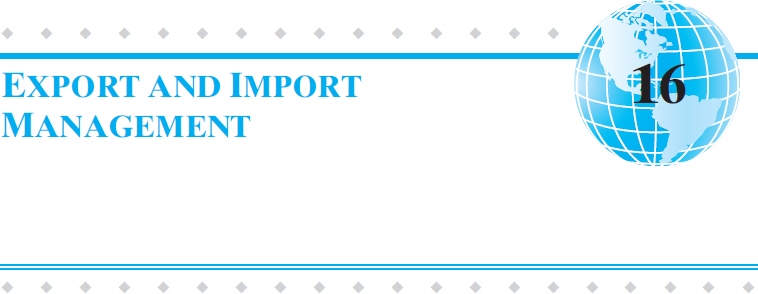
 HAPTER OVERVIEW
HAPTER OVERVIEW
- ORGANIZING FOR EXPORTS
- INDIRECT EXPORTING
- DIRECT EXPORTING
- MECHANICS OF EXPORTING
- ROLE OF THE GOVERNMENT IN PROMOTING EXPORTS
- MANAGING IMPORTS–THE OTHER SIDE OF THE COIN
- MECHANICS OF IMPORTING
- GRAY MARKETS
Exporting is the most popular way for many companies to become international. The main reasons for this are that (1) exporting requires minimum resources while allowing high flexibility, and (2) it offers substantial financial, marketing, technological, and other benefits to the firm. Because exporting is usually the first mode of foreign entry used by many companies, exporting early tends to give them first-mover advantage.1 However, exporting requires experiential knowledge. Exporters must acquire foreign market knowledge (i.e., clients, market needs, and competitors) and institutional knowledge (i.e., government, institutional framework, rules, norms, and values) as well as develop operational knowledge (i.e., capabilities and resources to engage in international operations).2 Selling to a foreign market involves numerous high risks arising from the lack of knowledge of and unfamiliarity with foreign environments, which can be heterogeneous, sophisticated, and turbulent. Furthermore, conducting market research across national boundaries is more difficult, complex, ...
Get Global Marketing Management, 6th Edition now with the O’Reilly learning platform.
O’Reilly members experience books, live events, courses curated by job role, and more from O’Reilly and nearly 200 top publishers.

